Western Civilization I
Topic outline
-
Welcome to Western Civilization 1!
Course Introduction
Welcome to Western Civilization 1. This class will discuss the history of Western Civilization (primarily Mesopotamia, the Near East, and Europe) from the earliest known civilizations to about the year 1500 CE. You will learn about major events, countries, ideas, and people and the impact that these had on their times and on how history developed. This knowledge is important for you to have because you are a person who lives in a society shaped by these events and ideas. The ultimate goal of this class is to help you understand how the flow of history has impacted the present and to help you understand the world you find yourself in now.
Upon successful completion of this course, the student will be able to:
-
Identify major countries, empires, and civilizations of Western Civilization from Prehistory - the Reformation.
-
Define key terms and facts about major countries, empires, and civilizations of Western Civilization from Prehistory - the Reformation.
-
Review the cause and effect of political, economic, cultural, philosophical, religious, and social developments in Western Civilization from Prehistory- the Reformation.
-
Apply critical thinking skills to knowledge learned in this course by participating in class activities.
Adopting institution should provide learners information on how to navigate the course. Consider adding an introductory navigation video. Text description could include, for example:Navigating the Course
This course is set up in Modules covering various topics which may be accessed from the course navigation menu on the left or by scrolling below. Modules may be collapsed in the menu and it the body of the course to minimize scrolling. Each module includes the relevant chapters followed by various activities, which may include discussion forums, listening activities and quizzes, practice quizzes, module tests, and other relevant activities as appropriate for each module. Many items are required and may be marked as completed automatically when the activity has been submitted (the broken check box), but others will marked as done by the student (the solid check box).Please move through the items below and continue through the Learner Support and Getting Started modules before moving on to Module 1. Be sure to check for announcements and due dates to stay on track.
 This course and its contents are licensed under a Creative Commons Attribution 4.0 International License by LOUIS: The Louisiana Library Network, except where otherwise noted.
This course and its contents are licensed under a Creative Commons Attribution 4.0 International License by LOUIS: The Louisiana Library Network, except where otherwise noted. -
-
This module contains all the items you should review and complete before you begin Module 1. Before moving on, be sure to:
- Check the News and Announcements Forum
- Read the Course Syllabus
- Introduce yourself to the class
- Read the instructions for the Q & A Forum
Good luck in the course!-
Use this forum to tell us a little about yourself and your interests. Some topic ideas:
- What is your field of study/research interest or concentration?
- What are you most interested in learning about in this class and why?
- Have you ever taken an online class before?
- Any other information you would like to share with your classmates, such as special interests or activities.
Post a picture! We look forward to meeting you.
-
Use this forum to ask your instructor any questions you have about the course. You may post at any time, and your instructor will respond here. Be as specific as possible.
Please keep in mind that others can see your posts, so do not post any personal information. If you have questions about your grade, please email your instructor directly. You can expect a response to posts and emails within [X] hours. [Recommendation is 24 hours M-F, next business day on weekends.]
Subscription should be set to Auto.
- Check the News and Announcements Forum
-
Use the information in this module to customize the template to your needs. This module is currently hidden from students, and available for you to refer to throughout the semester.
-
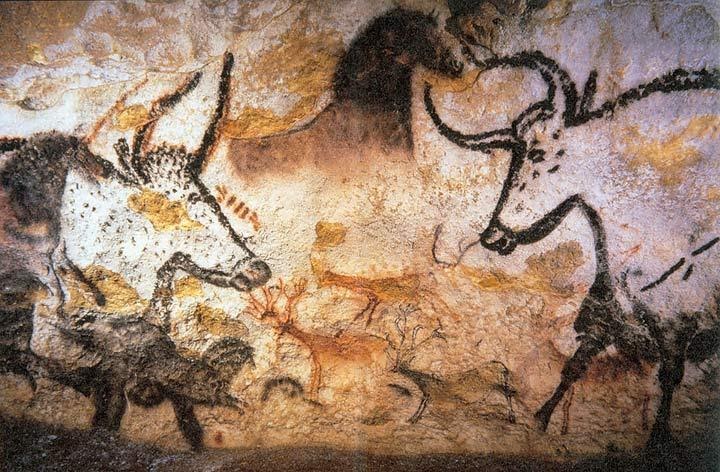
"Lascau_painting" is licensed under CC BY-SA 4.0 (Links open in new tab)Upon completion of this module, you will be able to:Identify major countries, empires, and civilizations of early civilization.
Define key terms and facts about the origins of civilizations
Review the cause and effect of political, economic, cultural, philosophical, religious, and social developments of early civilization
Apply critical thinking skills to knowledge learned in this course by participating in class activities.
To achieve these objectives:
- Read the Module 1 Introduction
- Read Chapter 1 in Western Civilization: A Concise History
- Complete the questions at the end of the chapter.
Note the check boxes to the right that help you track your progress: some are automatic, and some are manual.
Module Pressbooks Resources and Activities
You will find the following resources and activities in this module at the Pressbooks website. Click on the links below to access or complete each item.
-

"Great Pyramid of Giza" by kallerna is licensed under CC BY-SA 4.0. (Links open in new tab)
Upon completion of this module, you will be able to:Identify major countries, empires, and civilizations in ancient Egypt
Define key terms and facts about major countries, empires, and civilizations in ancient Egypt
Review the cause and effect of political, economic, cultural, philosophical, religious, and social developments in ancient Egypt.
Apply critical thinking skills to knowledge learned in this course by participating in class activities.
To achieve these objectives:
- Read the Module 1 Introduction
- Read Chapter 1 in Western Civilization: A Concise History
- Complete the questions at the end of the chapter.
Module Pressbooks Resources and Activities
You will find the following resources and activities in this module at the Pressbooks website. Click on the links below to access or complete each item.
-
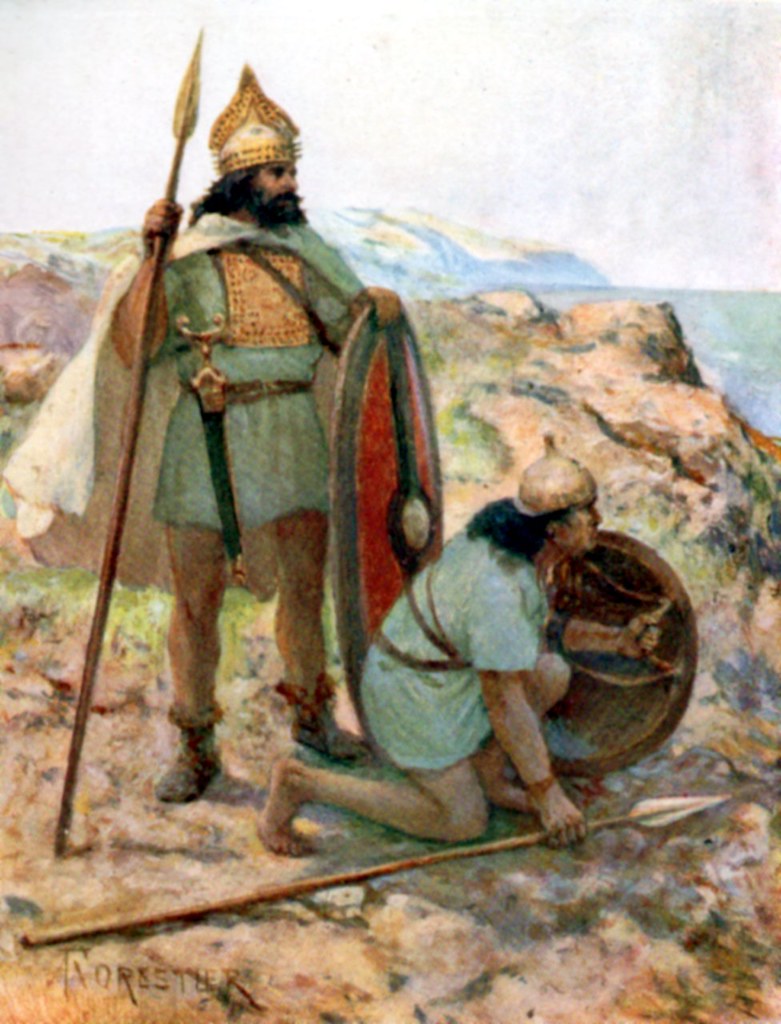
"Italic Bronze-Age warriors on look-out" by Forestier is licensed under CC BY 2.0 (Links open in new tab)
Upon completion of this module, you will be able to:Identify major countries, empires, and civilizations of the Bronze Age and the Iron Age.
Define key terms and facts about major countries, empires, and civilizations of the Bronze Age and the Iron Age.
Review the cause and effect of political, economic, cultural, philosophical, religious, and social developments of the Bronze Age and the Iron Age.
Apply critical thinking skills to knowledge learned in this course by participating in class activities.
To achieve these objectives:
- Read the Module 3 Introduction
- Read Chapter 3 in Western Civilization: A Concise History
- Complete the questions at the end of the chapter.
Module Pressbooks Resources and Activities
You will find the following resources and activities in this module at the Pressbooks website. Click on the links below to access or complete each item.
-
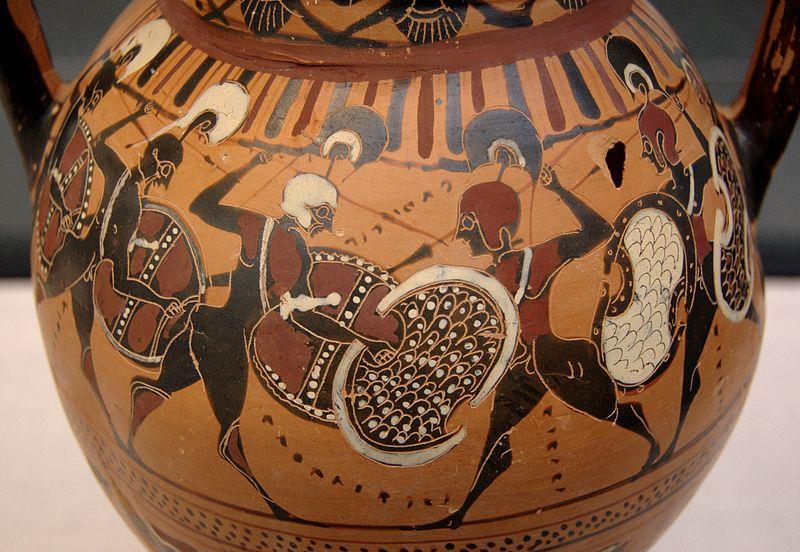
"Amphora phalanx Staatliche Antikensammlungen 1429" is in the Public Domain, CC0. (Links open in new tab)
Upon completion of this module, you will be able to:-
Identify contrast major countries, empires, and civilizations of Archaic Greece and Ancient Persia.
-
Define key terms and facts about major countries, empires, and civilizations of Archaic Greece and Ancient Persia.
-
Review the cause and effect of political, economic, cultural, philosophical, religious, and social developments in Archaic Greece and Ancient Persia.
-
Apply critical thinking skills knowledge learned in this course by participating in class activities.
To achieve these objectives:
- Read the Module 4 Introduction
- Read Chapter 4-5 in Western Civilization: A Concise History
- Complete the questions at the end of the chapter.
Module Pressbooks Resources and Activities
You will find the following resources and activities in this module at the Pressbooks website. Click on the links below to access or complete each item.
-
-
Instructors, use questions from the included test bank to build Test 1 in Moodle for online test delivery. Delete this module if using other assessments or assessing students in face-to-face class meetings.
In this module you will take your first exam for this course. Read the instructions carefully and take note of any special submission guidelines.
Upon completion of this module, you will have:
- Read and viewed the test instructions
- Scheduled your exam with the proctoring service [if applicable, delete if not needed]
- Completed Test 1.
To achieve these objectives:
- Read and view the contents of "Exam Information and Instructions" [if applicable, delete if not needed]
- Click on [Title of Assessment below] and follow the instructions.
- Log in to the proctoring service and take your exam. [if applicable, delete if not needed]
-
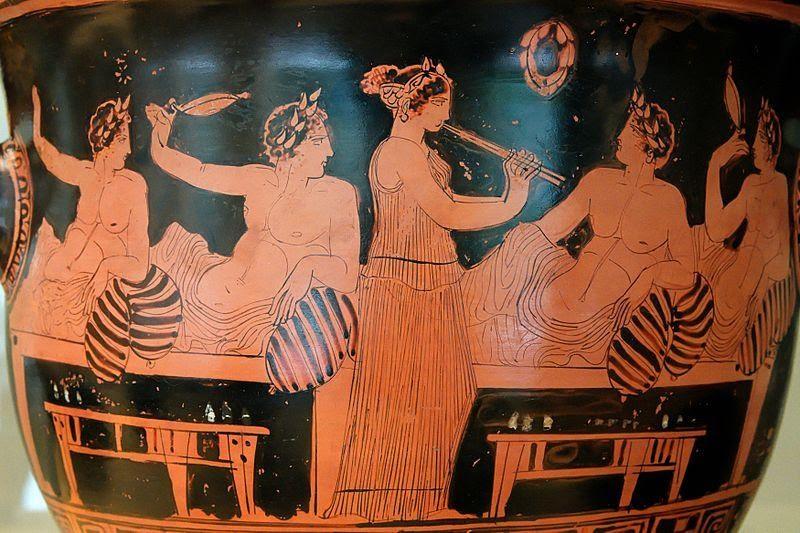
"Symposium" by Marie Nan Nguyen is licensed under CC BY 4.0. (Links open in new tab)
Upon completion of this module, you will be able to:-
Identify major countries, empires, and civilizations of Classical Greece.
-
Define key terms and facts about major countries, empires, and civilizations of Classical Greece.
-
Review the cause and effect of political, economic, cultural, philosophical, religious, and social developments in Classical Greece.
-
Apply critical thinking skills knowledge learned in this course by participating in class activities.
To achieve these objectives:
- Read the Module 5 Introduction
- Read Chapter 6 in Western Civilization: A Concise History
- Complete the questions at the end of the chapter.
Module Pressbooks Resources and Activities
You will find the following resources and activities in this module at the Pressbooks website. Click on the links below to access or complete each item.
-
-
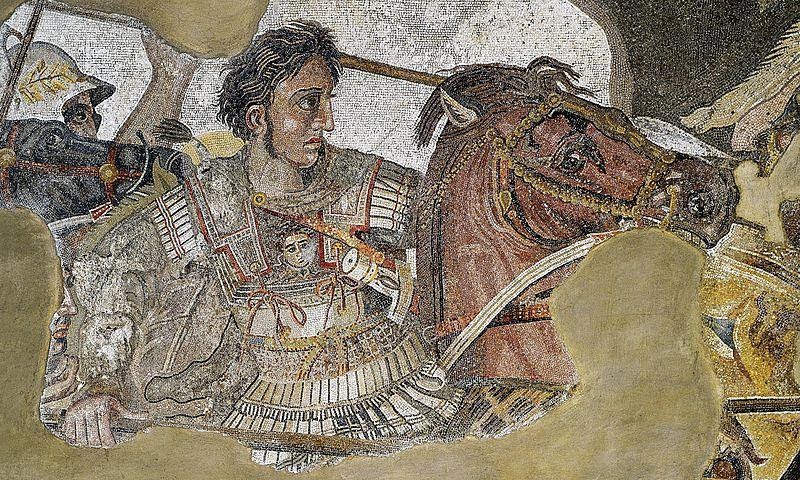
"Alexander the Great Mosaic" is in the Public Domain, CC0. (Links open in new tab)
Upon completion of this module, you will be able to:Identify major countries, empires, and civilizations of Hellenistic Greece.
Define key terms and facts about major countries, empires, and civilizations of Hellenistic Greece.
Review the cause and effect of political, economic, cultural, philosophical, religious, and social developments in Hellenistic Greece.
Apply critical thinking skills to knowledge learned in this course by participating in class activities.
To achieve these objectives:
- Read the Module 6 Introduction
- Read Chapter 7 in Western Civilization: A Concise History
- Complete the questions at the end of the chapter.
Module Pressbooks Resources and Activities
You will find the following resources and activities in this module at the Pressbooks website. Click on the links below to access or complete each item.
-
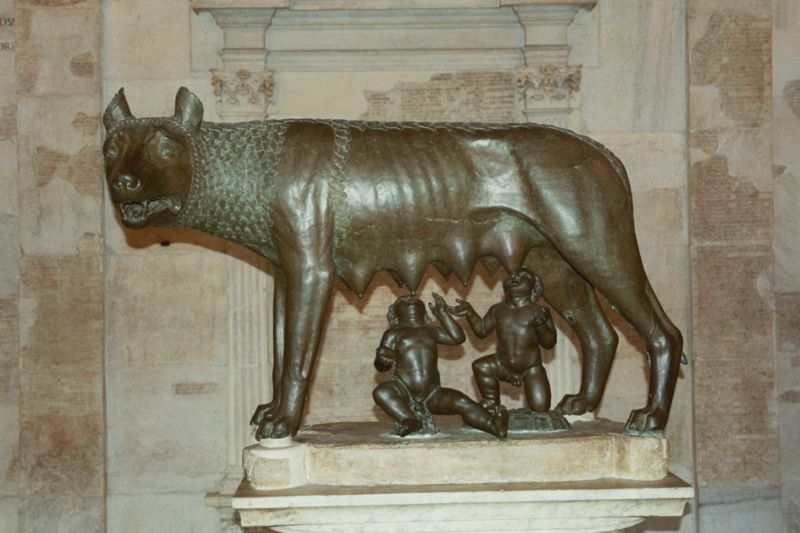
"800px-Beeld_van_Romulus_en_Remus" is licensed under CC BY 4.0. (Links open in new tab)
Upon completion of this module, you will be able to:
Identify major countries, empires, and civilizations of the Roman Republic.
Define key terms and facts about major countries, empires, and civilizations of the Roman Republic.
Review the cause and effect of political, economic, cultural, philosophical, religious, and social developments in the Roman Republic.
Apply critical thinking skills to knowledge learned in this course by participating in class activities.
To achieve these objectives:
- Read the Module 7 Introduction
- Read Chapter 8 in Western Civilization: A Concise History
- Complete the questions at the end of the chapter.
Module Pressbooks Resources and Activities
You will find the following resources and activities in this module at the Pressbooks website. Click on the links below to access or complete each item.
-
Instructors, use questions from the included test bank to build Test 1 in Moodle for online test delivery. Delete this module if using other assessments or assessing students in face-to-face class meetings.
In this module you will take your first exam for this course. Read the instructions carefully and take note of any special submission guidelines.
Upon completion of this module, you will have:
- Read and viewed the test instructions
- Scheduled your exam with the proctoring service [if applicable, delete if not needed]
- Completed Test 1.
To achieve these objectives:
- Read and view the contents of "Exam Information and Instructions" [if applicable, delete if not needed]
- Click on [Title of Assessment below] and follow the instructions.
- Log in to the proctoring service and take your exam. [if applicable, delete if not needed]
-

"Glanum-stele legionnaires" by Ursus is licensed under CC BY-SA 4.0. (Links open in new tab)
Upon completion of this module, you will be able to:
-
Identify major countries, empires, and civilizations of the Roman Empire.
-
Define key terms and facts about major countries, empires, and civilizations of the Roman Empire.
-
Review the cause and effect of political, economic, cultural, philosophical, religious, and social developments in the Roman Empire.
-
Apply critical thinking skills to knowledge learned in this course by participating in class activities.
To achieve these objectives:
- Read the Module 8 Introduction
- Read Chapter 9 in Western Civilization: A Concise History
- Complete the questions at the end of the chapter.
Module Pressbooks Resources and Activities
You will find the following resources and activities in this module at the Pressbooks website. Click on the links below to access or complete each item.
-
-
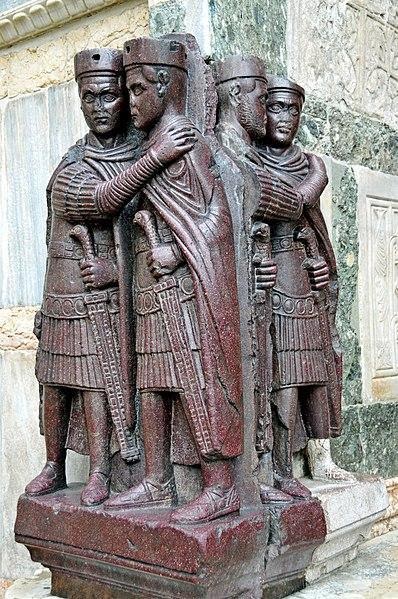
"Italy-1422 - The Tetrarchs (5226921309)" by Dennis Jarvis is licensed under CC BY-SA 4.0. (Links open in new tab)
Upon completion of this module, you will be able to:Identify major countries, empires, and civilizations of the late Roman Empire.
Define key terms and facts about major countries, empires, and civilizations of the late Roman Empire.
Review the cause and effect of political, economic, cultural, philosophical, religious, and social developments in the late Roman Empire.
Apply critical thinking skills to knowledge learned in this course by participating in class activities.
To achieve these objectives:
- Read the Module 9 Introduction
- Read Chapter 10 in Western Civilization: A Concise History
- Complete the questions at the end of the chapter.
Module Pressbooks Resources and Activities
You will find the following resources and activities in this module at the Pressbooks website. Click on the links below to access or complete each item.
-
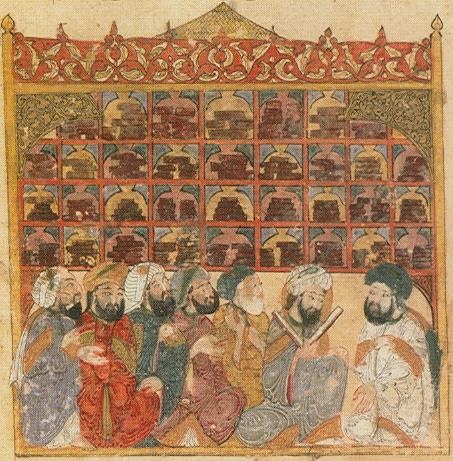
"Maqamat hariri" by Zereshk is in the Public Domain, CC0. (Links open in new tab)
Upon completion of this module, you will be able to:
Identify major countries, empires, and civilizations of Islam and the Caliphates.
Define key terms and facts about major countries, empires, and civilizations of Islam and the Caliphates.
Review the cause and effect of political, economic, cultural, philosophical, religious, and social developments in Islam and the Caliphates.
Apply critical thinking skills to knowledge learned in this course by participating in class activities.
To achieve these objectives:
- Read the Module 10 Introduction
- Read Chapter 11 in Western Civilization: A Concise History
- Complete the questions at the end of the chapter.
Module Pressbooks Resources and Activities
You will find the following resources and activities in this module at the Pressbooks website. Click on the links below to access or complete each item.
-

"Justinian mosaik ravenna" is in the Public Domain, CC0. (Links open in new tab). (Links open in new tab)
Upon completion of this module, you will be able to:Identify major countries, empires, and civilizations of Byzantium and Early Medieval Europe.
Define key terms and facts about major countries, empires, and civilizations of Byzantium and Early Medieval Europe.
Review the cause and effect of political, economic, cultural, philosophical, religious, and social developments in Byzantium and Early Medieval Europe.
Apply critical thinking skills to knowledge learned in this course by participating in class activities.
To achieve these objectives:
- Read the Module 11 Introduction
- Read Chapter 12-13 in Western Civilization: A Concise History
- Complete the questions at the end of the chapters.
Module Pressbooks Resources and Activities
You will find the following resources and activities in this module at the Pressbooks website. Click on the links below to access or complete each item.
-
Instructors, use questions from the included test bank to build Test 1 in Moodle for online test delivery. Delete this module if using other assessments or assessing students in face-to-face class meetings.
In this module you will take your first exam for this course. Read the instructions carefully and take note of any special submission guidelines.
Upon completion of this module, you will have:
- Read and viewed the test instructions
- Scheduled your exam with the proctoring service [if applicable, delete if not needed]
- Completed Test 1.
To achieve these objectives:
- Read and view the contents of "Exam Information and Instructions" [if applicable, delete if not needed]
- Click on [Title of Assessment below] and follow the instructions.
- Log in to the proctoring service and take your exam. [if applicable, delete if not needed]
-
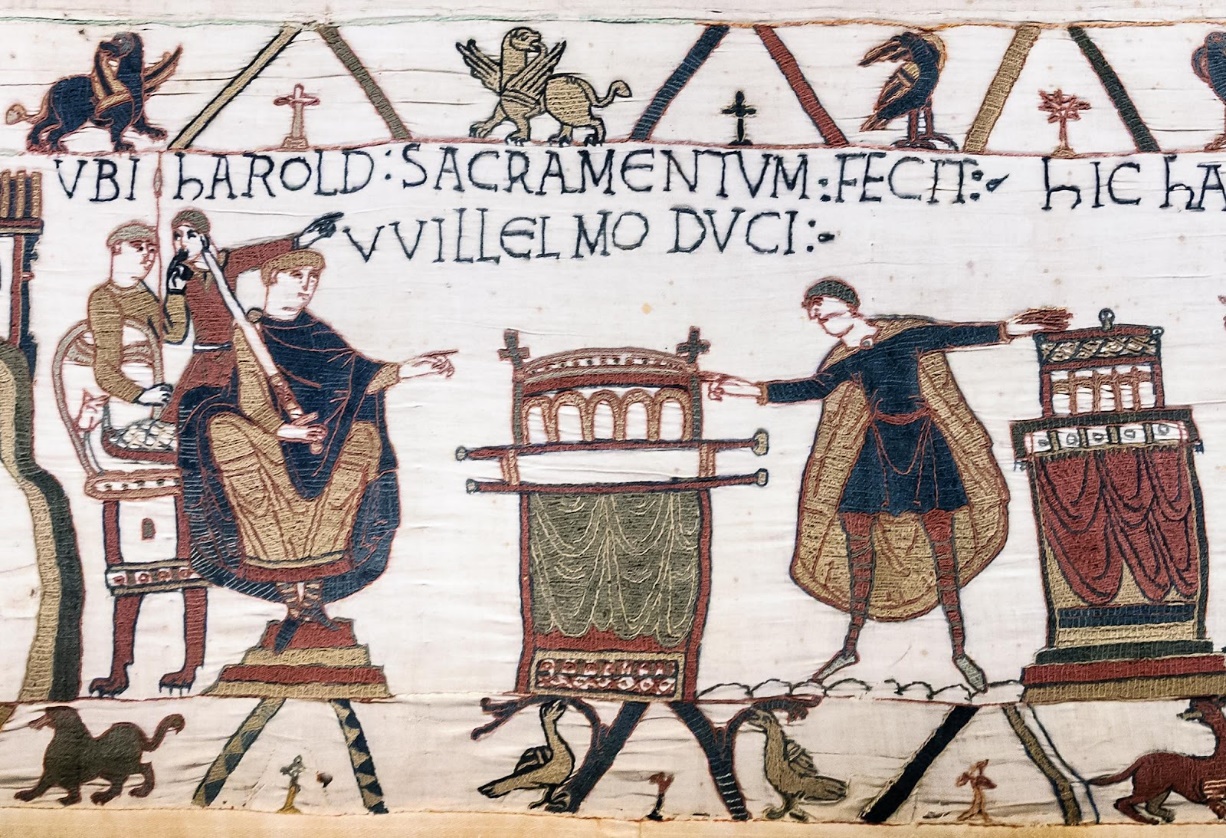
"Bayeux Tapestry scene23 Harold sacramentum fecit Willelmo duci" is in the Public Domain, CC0. (Links open in new tab)
Upon completion of this module, you will be able to:
- Identify major countries, empires, and civilizations of the High Middle Ages.
- Define key terms and facts about major countries, empires, and civilizations of the High Middle Ages.
- Review the cause and effect of political, economic, cultural, philosophical, religious, and social developments in the High Middle Ages.
- Apply critical thinking skills to knowledge learned in this course by participating in class activities
To achieve these objectives:
- Read the Module 12 Introduction
- Read Chapter 14 in Western Civilization: A Concise History
- Complete the questions at the end of the chapters.
Module Pressbooks Resources and Activities
You will find the following resources and activities in this module at the Pressbooks website. Click on the links below to access or complete each item.
-

"Gerhart Altzenbach, Kleidung widder den Todt Anno 1656" is in the Public Domain, CC0. (Links open in new tab)
Upon completion of this module, you will be able to:
1. Identify major countries, empires, and civilizations of the Middle Ages.
2. Define key terms and facts about major countries, empires, and civilizations of the Middle Ages.
3. Review the cause and effect of political, economic, cultural, philosophical, religious, and social developments in the Middle Ages.
4. Apply critical thinking skills to knowledge learned in this course by participating in class activities.
To achieve these objectives:
- Read the Module 13 Introduction
- Read Chapter 15 in Western Civilization: A Concise History
- Complete the questions at the end of the chapters.
Module Pressbooks Resources and Activities
You will find the following resources and activities in this module at the Pressbooks website. Click on the links below to access or complete each item.
- Read the Module 13 Introduction
-
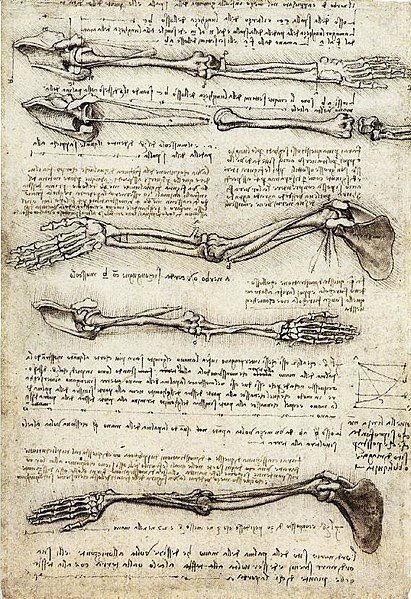
"Da Vinci Anatomical Drawings" by Leonardo da Vinci is in the Public Domain, CC0. (Links open in new tab)
Upon completion of this module, you will be able to:1. Identify major countries, empires, and civilizations of the Renaissance.
2. Define key terms and facts about major countries, empires, and civilizations of the Renaissance.
3. Review the cause and effect of political, economic, cultural, philosophical, religious, and social developments in the Renaissance.
4. Apply critical thinking skills to knowledge learned in this course by participating in class activities.
To achieve these objectives:
- Read the Module 14 Introduction
- Read Chapter 16 in Western Civilization: A Concise History
- Complete the questions at the end of the chapters.
Module Pressbooks Resources and Activities
You will find the following resources and activities in this module at the Pressbooks website. Click on the links below to access or complete each item.
- Read the Module 14 Introduction
-
Instructors: This week does not have an assigned topic. Use this week to review material covered this semester in preparation for the final exam, discuss concepts, assign interactive or creative activities in class, or use class time this week however best fits for your class.
-
Instructors, use questions from the included test bank to build Test 1 in Moodle for online test delivery. Delete this module if using other assessments or assessing students in face-to-face class meetings.
In this module you will take your first exam for this course. Read the instructions carefully and take note of any special submission guidelines.
Upon completion of this module, you will have:
- Read and viewed the test instructions
- Scheduled your exam with the proctoring service [if applicable, delete if not needed]
- Completed Test 1.
To achieve these objectives:
- Read and view the contents of "Exam Information and Instructions" [if applicable, delete if not needed]
- Click on [Title of Assessment below] and follow the instructions.
- Log in to the proctoring service and take your exam. [if applicable, delete if not needed]
